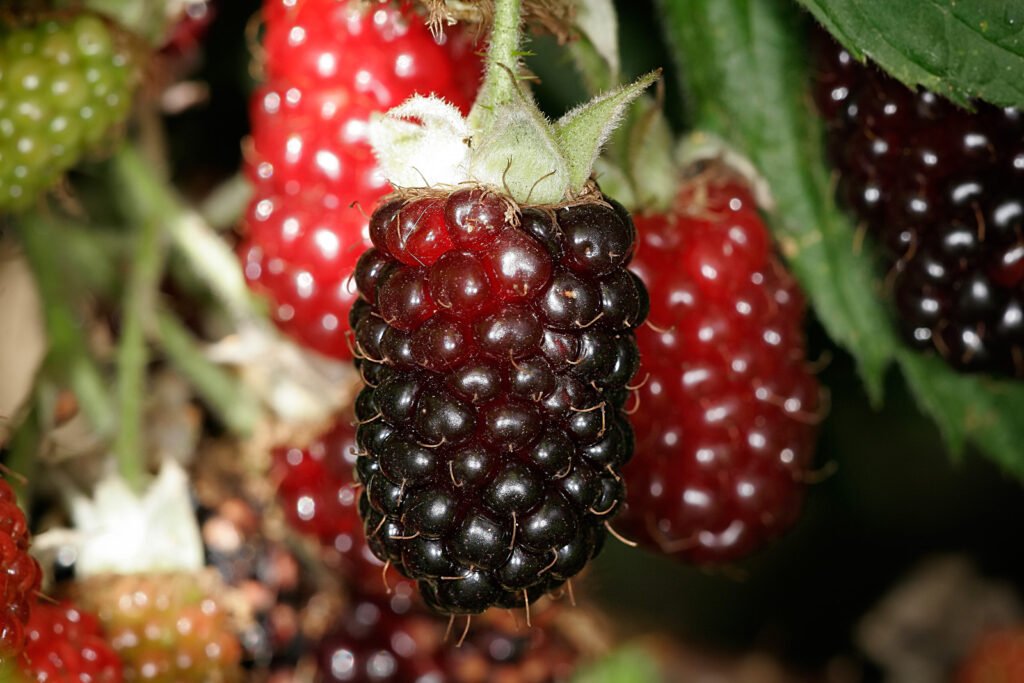The boysenberry, with its tantalizing blend of flavors and rich history, stands as a testament to the wonders of horticultural innovation. This remarkable fruit, known scientifically as Rubus × loganobaccus, is not merely a product of nature’s whimsy but a carefully crafted crossbreed between the European raspberry (Rubus idaeus), European blackberry (Rubus fruticosus), American dewberry (Rubus aboriginum), and loganberry (Rubus × loganobaccus). In this article, we delve into the fascinating story behind the boysenberry, exploring its origins, characteristics, cultivation, and culinary uses.
The Origins of the Boysenberry
The boysenberry traces its roots back to the early 20th century in California, where it was first cultivated by Rudolph Boysen, a farmer and horticulturalist with a passion for experimentation. Boysen’s endeavors led him to crossbreed various berry species in search of a fruit that combined the best traits of each parent plant. His efforts culminated in the creation of a unique hybrid berry, which he initially dubbed the “boysenberry” in honor of his pioneering work.
Genetic Composition of the Boysenberry
At its core, the boysenberry is a genetic mosaic, blending the genetic traits of its parent species to create a fruit that is distinct in flavor, appearance, and texture. The European raspberry contributes its sweet, aromatic essence, while the European blackberry lends its robust flavor and deep purple hue. The American dewberry adds a hint of tartness and complexity, and the loganberry brings its characteristic juiciness and tangy undertones to the mix.
Characteristics of the Boysenberry
The boysenberry boasts a unique combination of attributes that set it apart from its parent species. Its large, dark purple berries are plump and juicy, with a sweet-tart flavor profile that tantalizes the taste buds. The fruit is typically larger than a raspberry but smaller than a blackberry, with a soft, delicate texture that melts in the mouth. Boysenberries are known for their rich, complex flavor, which evolves as the fruit ripens, transitioning from tart and tangy to sweet and succulent.
Cultivation of Boysenberries
Cultivating boysenberries requires careful attention to soil, climate, and growing conditions to ensure optimal yield and quality. These berries thrive in well-drained, slightly acidic soil with ample sunlight and moderate water supply. They are typically propagated through cuttings or division of established plants and require regular pruning to promote vigorous growth and fruit production.
Harvesting and Processing
Boysenberries are harvested at peak ripeness when they are plump, juicy, and fully colored. The berries are delicate and prone to bruising, so they must be handled with care during harvesting and processing. Once harvested, boysenberries can be consumed fresh or processed into various products, including jams, jellies, syrups, pies, and preserves. Their intense flavor and vibrant color make them a favorite ingredient in desserts, sauces, and beverages.
Culinary Uses
Boysenberries are prized by chefs and home cooks alike for their versatility and culinary appeal. Their bold flavor and luscious texture make them an ideal choice for pies, cobblers, and crisps, where they shine as both a primary ingredient and a garnish. Boysenberry jam and jelly are beloved for their vibrant color and complex flavor profile, while boysenberry syrup adds a touch of sweetness to pancakes, waffles, and desserts.
Health Benefits of Boysenberries
In addition to their delectable taste, boysenberries are packed with essential nutrients and antioxidants that promote health and well-being. These berries are rich in vitamin C, vitamin K, fiber, and anthocyanins, which have been linked to a range of health benefits, including improved immune function, heart health, and cognitive function. Incorporating boysenberries into your diet can help boost your intake of vital nutrients and support overall health.
Conclusion
Boysenberry stands as a testament to the ingenuity of horticulturalists and the wonders of genetic diversity. This remarkable hybrid fruit, born from the union of European raspberries, blackberries, American dewberries, and loganberries, captivates the senses with its bold flavor, vibrant color, and luscious texture. From its humble beginnings in Rudolph Boysen’s experimental garden to its widespread popularity in kitchens around the world, the boysenberry continues to enchant and delight with its irresistible charm. Whether enjoyed fresh, baked into a pie, or transformed into jam or syrup, the boysenberry remains a cherished symbol of nature’s bounty and the boundless possibilities of crossbreeding and hybridization.







